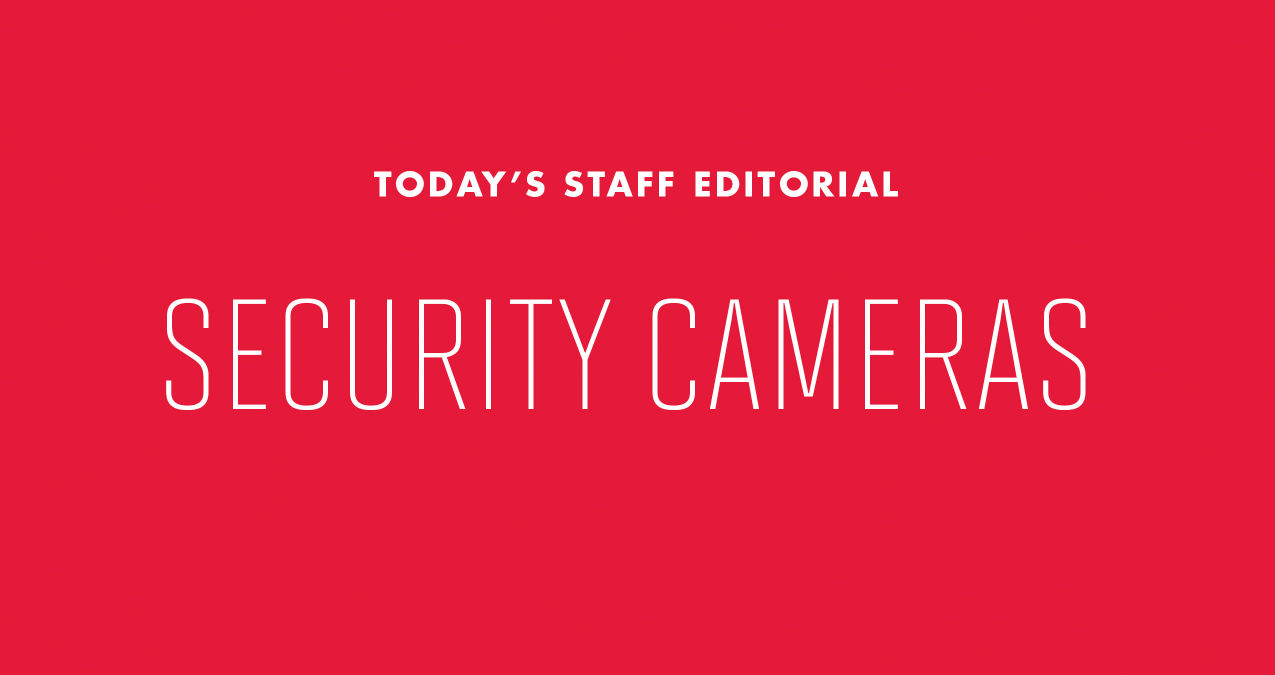
Security Cameras
The RHA already brought at least one comfort of home into the university’s dorms this semester when it rolled out two-ply toilet paper about a month ago.
Now, the Residence Hall Association Senate hopes to bring students the safety of home as well, thanks to a unanimous vote to endorse a security pilot camera program in dorms around the campus.
The Department of Resident Life and Residential Facilities could introduce the cameras as soon as January, Resident Life Director Deb Grandner told The Diamondback.
Right-to-privacy stalwarts can rest easy, though; the measure is hardly an indicator of an oppressive police state.
You won’t have a camera trained on you as you stumble bleary-eyed and pajamas-clad into the floor lounge or stagger back into your room after a Friday night out. Rather, officials would place cameras only in dorm lobbies, where most of the traffic is located, and not on dorm floors.
“It’s really all about safety,” Grandner said. “It’s not about monitoring people.”
And with just a quick glance at crime statistics, student safety appears a viable concern when it comes to dorm living.
After all, more than 40 percent of all thefts reported to University Police occurred in dorms, and several students have reported voyeurism incidents in dorm bathrooms over the past two months, a concerning trend.
Last December, the Prince George’s County Circuit Court sentenced a then-34-year-old man to 60 years in prison for multiple burglaries in North Campus dorms. And students likely won’t forget the so-called “College Park Cuddler” — half campus myth, half real-life perpetrator — any time soon.
For University Police, the ability to review footage captured in lobbies after students living in dorms report thefts or other crimes would surely prove advantageous. Additionally, the presence of cameras may even deter crimes from occurring in the first place. The department already plays back footage taken from cameras atop blue-light emergency phone and others situated around the campus, and it began requiring its officers to wear body cameras last semester.
That footage wouldn’t come cheap, however, and Residential Facilities Director Jon Dooley estimated the cost at $6,000 per camera. Students likely would foot most of the bill through a housing fee increase, Grandner said, but a grant could help fund a portion of it.
Crunching the numbers, though, the cost seems negligible compared to the potential safety benefits. Even if Resident Life places a camera in all 37 dorms come January, the 9,500 students who populate them should pay less than $25 in additional fees. (Given that officials don’t anticipate placing cameras in all dorms right away, even that amount seems like an overestimate).
Students deserve housing in which they can feel safe but still have their privacy honored, and Resident Life’s proposed security camera program is a common sense improvement to dorm life. While the RHA Senate and university officials consider steps to implement the program, this editorial board urges senators to keep the safety and well-being of all students at the forefront of their dialogue.



